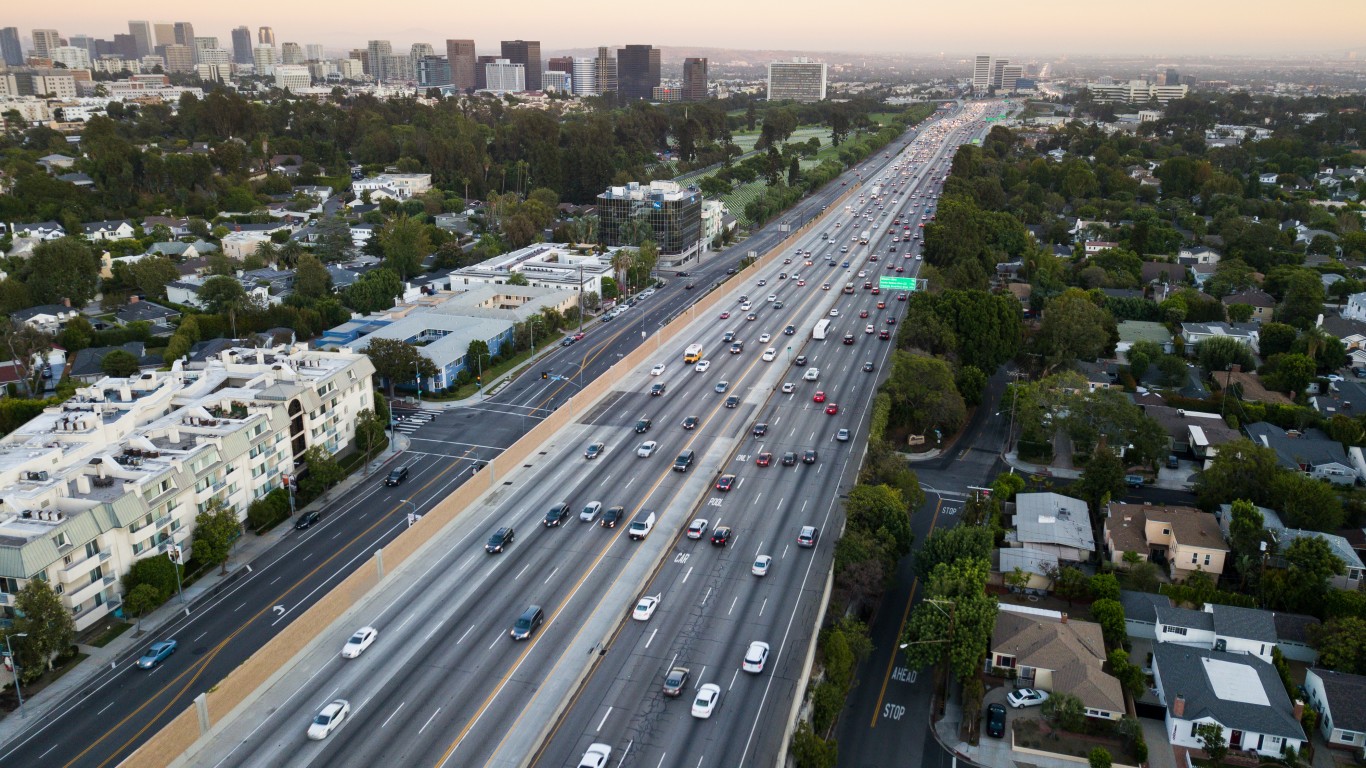Special Report
A 2002 Pileup in LA Was the Worst Car Crash in US History

Published:
Last Updated:

The National Highway Traffic Safety Administration estimates that 42,915 people died in motor vehicle traffic crashes in 2021, a 10.5% increase from the prior year. While the data shows that multi-car crashes increased by 16% in 2021, most of these have involved only a few vehicles — at least relative to the Los Angeles 2002 pileup that involved 216 vehicles, the worst in U.S. history.
Since 1990, 23 crashes involved 100 or more vehicles, based on a 24/7 Wall St. review of historical sources. Why do such car accidents occur? Notably, most of the car crashes involving such a high number of vehicles since 1990 happened between November and March. At first blush, this would indicate weather is a factor.
Conditions such as icy roads and whiteouts due to winter storms, as well as rain and thick fog, can be a factor in many accidents. In the case of the Nov. 3, 2002, crash in Los Angeles, fog was likely a factor. According to reports, shortly before 7:00 a.m., a semitrailer crashed into the center concrete divider. This began a long chain of crashes on both sides of the highway.
Most of the biggest car pileups of the last 30+ years also happened on America’s interstate highway system – as did the worst crash in U.S. history. The 216-vehicle wreck occurred 25 miles south of LA, on I-710, a major north-south highway in the Los Angeles metropolitan area. (See the 20 car accidents Americans get in the most.)
Fatal crashes point to one drawback of cars. Despite huge improvements in safety – anything from crash avoidance software to airbags to anti-lock brakes – humans remain vulnerable during road accidents. (These are the deadliest states to drive.)
While the LA crash involved the most cars, there were no reported fatalities. Forty-one people were injured, however. In other large multi-vehicle wrecks, there are often fatalities. A dust storm on Nov. 29, 1991 in Coalinga, California, contributed to a more than 100 car crash, resulting in 17 deaths and 114 injuries. In Calhoun, Tennessee, on Dec. 11, 1990, fog was a contributing factor in the 99 cars pileup, leading to 12 deaths and 42 injuries.
See 24/7 Wall St.’s list of the worst car accidents in America since the 1990s.
Credit card companies are pulling out all the stops, with the issuers are offering insane travel rewards and perks.
We’re talking huge sign-up bonuses, points on every purchase, and benefits like lounge access, travel credits, and free hotel nights. For travelers, these rewards can add up to thousands of dollars in flights, upgrades, and luxury experiences every year.
It’s like getting paid to travel — and it’s available to qualified borrowers who know where to look.
We’ve rounded up some of the best travel credit cards on the market. Click here to see the list. Don’t miss these offers — they won’t be this good forever.
Thank you for reading! Have some feedback for us?
Contact the 24/7 Wall St. editorial team.